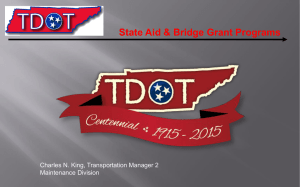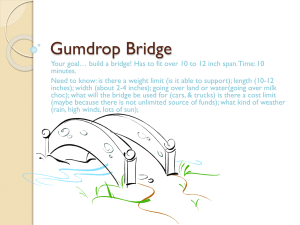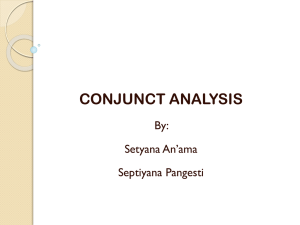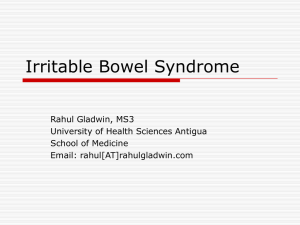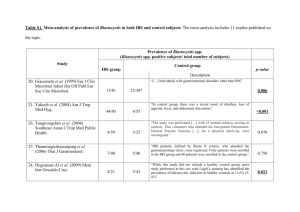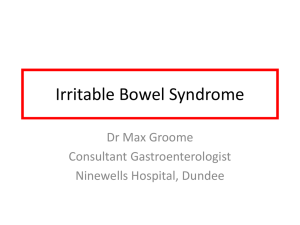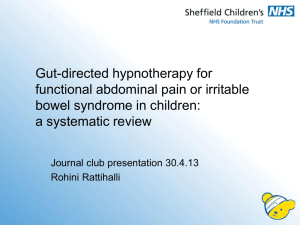IBS Overview - CAIT - Rutgers University
advertisement
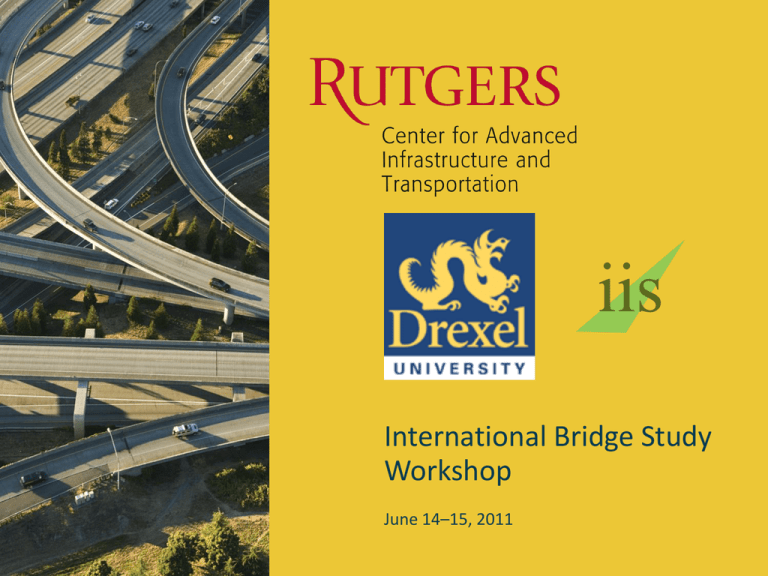
iis International Bridge Study Workshop June 14–15, 2011 IBS Motivation >> A significant investment has been made into infrastructure and bridge technology research, development and demonstrations by Federal and State Governments in the US and abroad since the 1980s. Although there is a great need for objective and mechanistic approaches to bridge evaluation, maintenance and repair, and there are many aspiring technology providers, there has been very few applications, if any, providing insight, knowledge and actionable recommendations to the satisfaction of a bridge owner. There is a lack of guidelines for bridge owners to help them decide whether/which/when/why/how of technology leveraging. Those guidelines that exist (AASHTO Manual for Condition Evaluation) are dated and insufficient, and may not guarantee safe applications and reliable results. There is a glaring lack of proper terminology. IBS Objectives >> Bring together a select group of international bridge experts to demonstrate the most promising technology tools on the same bridge in NJ. The NJ bridge exhibited a spectrum of bridge performance concerns, defying common heuristic and empirical solutions and requiring expert technology leveraging. Demonstrate and document the best practices for technology selection, integrative application, objective data and information generation, and interpretation for effective interventions/repairs. To develop (a) International Guidelines for Bridge Owners to Assist in Technology Leveraging; (b) Best Practices for the Selection, Application, Integration, and Interpretation of Technology Tools. IBS Participants: Asia >> CHINA • Southeast University Nanjing – Dr. Jian Zhang, Wan Hong, Yongsheng Tang, Lei Huang JAPAN • • • University of Tokyo – Dr. Nagayama Tomonori and Dr. Yozo Fujino Central Nippon Expressway Co. (NEXCO-W) – Dr. Masato Matsumoto, Dr. Koji Mitani Keisoku Research Consultant (KRC) – Dr. Noriyuki Miyamoto, Dr. Yukihiro Itoh IBS Participants: Asia >> KOREA • • • • • • Seoul National University (SNU) – Dr. Ho-Kyung Kim Korea Advanced Institute of Science and Technology (KAIST) – Dr. Hoon Sohn INHA University – Dr. Soobong Shin Pyunghwa Engineering Consultants (PEC) – Dr. JungSeok Lee Korea Expressway Corporation (KEC) – Dr. WonTae Lee, ChangGuen Lee Sejong University – Dr. JongJae Lee IBS Participants: Europe >> AUSTRIA • Vienna Consulting Engineers (VCE, Austria) and EU 7th Framework IRIS Project – Dr. Helmut Wenzel GREAT BRITAIN • The University of Sheffield (Great Britain) – Dr. James Brownjohn SWITZERLAND • Ecole Poly Federal Lausanne (EPFL, Switzerland) – Dr. Ian Smith, Romain Pasquier • SMARTEC/Roctest (partner with Princeton University) IBS Participants: United States >> • FHWA TFHRC – Dr. Hamid Ghasemi, Dr. Firas Ibrahim • FHWA, New Jersey – Larry Cullari • NJDOT – Dave Lambert, Nat Kasbekar, Greg Renman, • • • • Ahmad Ghorbani, Eddy Germain, Jayant Dalal, Mujahid Khan, Mahesh Patel, Xiaohua Cheng CAIT/Rutgers University – Dr. Ali Maher, Dr. Nenad Gucunski, Allison Thomas, Krystal Smith-Pleasant, Ken Lee Drexel University – Jeff Weidner, John Prader, Nathan Dubbs, Dr. Anu Pradhan, Dr. Ivan Bartoli, John DeVitis, Adrienne Deal, Dave Masceri Highway R&D Services – John Hooks InspecTech – Mike Schellhase, Ben Witter IBS Participants: United States >> • • • • • • • Intelligent Infrastructure Systems – Dr. Frank Moon, Dr. Emin Aktan Michael Baker Corp. – Dick Dunne Olson Engineering – Eugenia Roman Parsons Brinckerhoff – Dr. Andy Foden, Tom Fisher, Reed Sibley Pennoni Associates – David Lowdermilk, Jason Winterling Princeton University – Dr. Branko Glisic, Dorotea Sigurdadottir Smart Structures – Dr. Paul Sumitoro, Chris Roney, Richard Sumitoro • University of Delaware – Dr. Dennis Mertz • Utah State University – Dr. Marv Halling, Dr. Paul Barr, Steve Petroff • Western Michigan University – Dr. Upul Attanayake Context of Technology Application >> Next Generation Visual Bridge Inspection Measure Geometry; Materials: In-situ, sampling, lab testing Characterize Structure, Foundation & Soil (St-Id); Diagnosis Prognosis and Risk Evaluation; Design of Corrective Actions Health and Performance Monitoring; Asset Management Wireless devices linked to e-archive enhancing effective productive inspection Surveying and GPS: coordinate of discrete points – as-is conditions and validate plans FE Modeling and simulations for identifying critical regions, failure modes Scenario Analyses: Critical demand/ capacity envelopes, load rating, effective maintenance, identify repairs or posting Operational enhancement technology (ITS), WIM, open-road tolling, adverse driving conditions alert & actions (de-ice) Practical local NDE devices Non-contact geometry capture – photo & 3D Laser Systematic wide-area NDE applications Identify hazards, vulnerable exposure & assess risk Automated security & law enforcement technology E-Archive and 3D CAD to serve as a Map of Critical Areas In-situ material characterization; sampling & lab testing Controlled Testing: Truck loads; Excitation; Impact; Operational Monitoring Identify risk mitigation measures and any emergency actions Structural health monitoring to drive need-based custom inspections Heuristic bridgespecific knowledge repository 3D CAD for capturing as-is geometry of system and elements Parameter Id; FE model calibration, validation. Identify if technology may help mitigate risk Asset management based on projected lifecycle demands, capacity & cost



